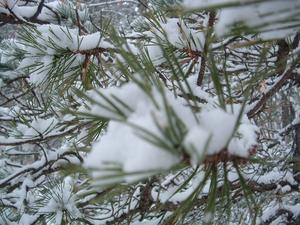Most children love to write haiku poetry. It’s short- only three lines long, and there are no rigid rules about capital letters or punctuation to remember. It’s often comprised of simple observations about nature with which most children are familiar.
The only rule to which a child must adhere is that each line of the haiku must be a specific length:
(1) five syllables
(2) seven syllables
(3) five syllables
Here are some ideas of how haiku may be used in the classroom throughout the year.
* On the first day back in September, instead of the old “How I Spent My Summer Vacation” assignment, give the class a brief explanation of how a haiku poem is constructed. Then write one about yourself on the blackboard. Invite each child to make one about himself. Example:
Jim, third grade student
Loves to run and play soccer
Plays the cello too.
The poems can be glued on a large apple or other fruit, entitled “The Pick of the Crop” and affixed to the classroom door.
* Go for a walk around the school yard at the start of each new season. Ask the children to choose their favorite sight, sound, or smell announcing the change. Return to class and ask each child to write a haiku about their choice. Encourage the use of a dictionary for help with new words. Attach each poem to a symbol of the new season, (leaves, snowflakes, Spring flowers, suns) and display. The poems will make an interesting bulletin board.
* Make a cooperative chart list of Halloween (or any holiday) words. Children can pick their favorite and write a haiku about it. During Art, they paint a picture in which their word occupies a prominent place. Attach the poems to the upper corner of each picture and you’ll have another eye-catching bulletin board display.
* Children can make greeting cards for Christmas or other special occasions. Write a haiku poem on rough paper until it’s corrected, then recopy in good. Fold construction paper in half. Illustrate the front and paste poem on the inside.
* Give out magazines and ask the children to find a picture they especially like, and cut it out neatly. They will then write a haiku poem about it. Mount pictures and poems for display if you wish.
* Each child is to think about an animal and write a haiku riddle about it. The children can take turns reading the riddles to their classmates and asking them to guess the answer.
Grey with furry tail
Hiding nuts for winter food
Wise little creature.
The poems may then be collected and made into a “Class Book of Riddles”.
* Make a haiku about your favorite (or least favorite) school subject. ”
Numbers in my brain
Shoot them off to outer space
Math is hard for me.
These poems make a great display for Education Week.
Haiku poetry can be written about anything. The resourceful teacher can incorporate it into any subject area including Science, Social Studies or Current Events. Just choose a topic and assign a haiku. To strengthen motivation, offer a small prize for the most creative offering.
Haiku writing is valuable for drilling syllabication, and for practicing use of a dictionary and a thesaurus. It also develops creativity, patience and thinking skills.
Children aren’t the only ones who like this type of creative expression; teachers are fond of it too. It’s good for independent work, it’s fast and easy to mark and it provides lots of material for attractive bulletin boards.
It’s a valuable teaching tool every teacher should have up her sleeve.


